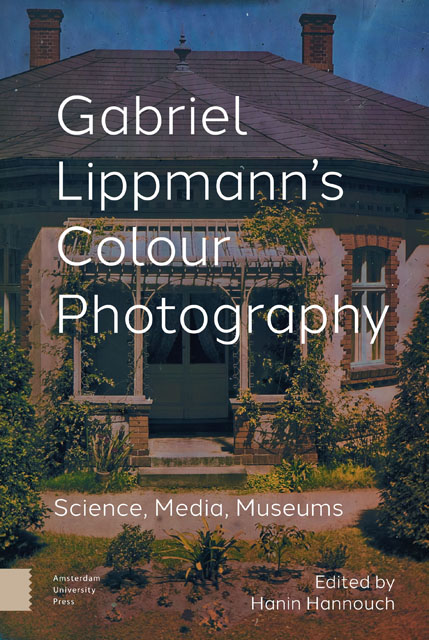Book contents
- Frontmatter
- Table of contents
- Gabriel Lippmann’s Colour Photography: A Critical Introduction
- Part I The Science of Colour Photography and the Colour Photography of Science
- Part II Media History, Aesthetics, and Culture
- Part III Contemporary Reception and Future Trajectories
- Afterword: Building Bridges over Standing Waves
- Index
10 - Exhibiting Gabriel Lippmann: A Collaborative Challenge
Published online by Cambridge University Press: 16 November 2022
- Frontmatter
- Table of contents
- Gabriel Lippmann’s Colour Photography: A Critical Introduction
- Part I The Science of Colour Photography and the Colour Photography of Science
- Part II Media History, Aesthetics, and Culture
- Part III Contemporary Reception and Future Trajectories
- Afterword: Building Bridges over Standing Waves
- Index
Summary
Abstract
This essay aims to show how the nature of cultural goods initiates specific collaborative approaches. Photo Elysée, Museum for Photography owns 138 Lippmann interferential plates, one of the largest collections in the world. Donated by descendants of Lippmann's in-laws in the 1990s, these plates are among the wonders of the collection, which counts over one million photographic objects. This article aims to explain what such a collection brings to the institution in terms of opening up to external disciplines and collaborations which, in turn, nourish the museum's work in a much broader way. At the intersection of the history of colour photography, science and contemporary art, Lippmann plates push the museum beyond its borders.
Keywords: Gabriel Lippmann, museum collections, museology, contemporary physics, exhibitions, preservation
With the largest collection of original interferential photochromes by Gabriel Lippmann in the world, Photo Elysée in Lausanne (Switzerland) has recently launched an ambitious research programme to deepen knowledge not only of Lippmann process, in which other researchers and institutions are also interested, but also of Lippmann's role in the history of photography. The complexity of interferential photochromy, Gabriel Lippmann's special position between the scientific, photographic and holographic worlds, and the diffusion and circulation of the process in Europe and throughout the world make it necessary to cross-reference fields of expertise to gain a better understanding of this subject. For this reason, Photo Elysée has embarked on an important interdisciplinary collaboration, which will open up new perspectives of collaborations for the institution for future projects.
An Atypical Collection
In 1985, when Pierre-Yves Suter learned that the Musée de l’Elysée (former name of Photo Elysée), a few kilometres from his home, was dedicated to preserving photography in all its forms, he persuaded his father, Gabriel Suter, to bequeath the Lippmann interferential photochromes he owned to this new institution. Indeed, Gabriel Suter and his sister, Antoinette Monition Suter, were the heirs of the physicist Gabriel Lippmann (1845–1921). Although they had never known their illustrious great-uncle, their mother, Charlotte Cherbuliez, had often spoken of him. She and her sister were very close to the childless Lippmann couple (Suter 1999).
- Type
- Chapter
- Information
- Gabriel Lippmann's Colour PhotographyScience, Media, Museums, pp. 251 - 272Publisher: Amsterdam University PressPrint publication year: 2022



